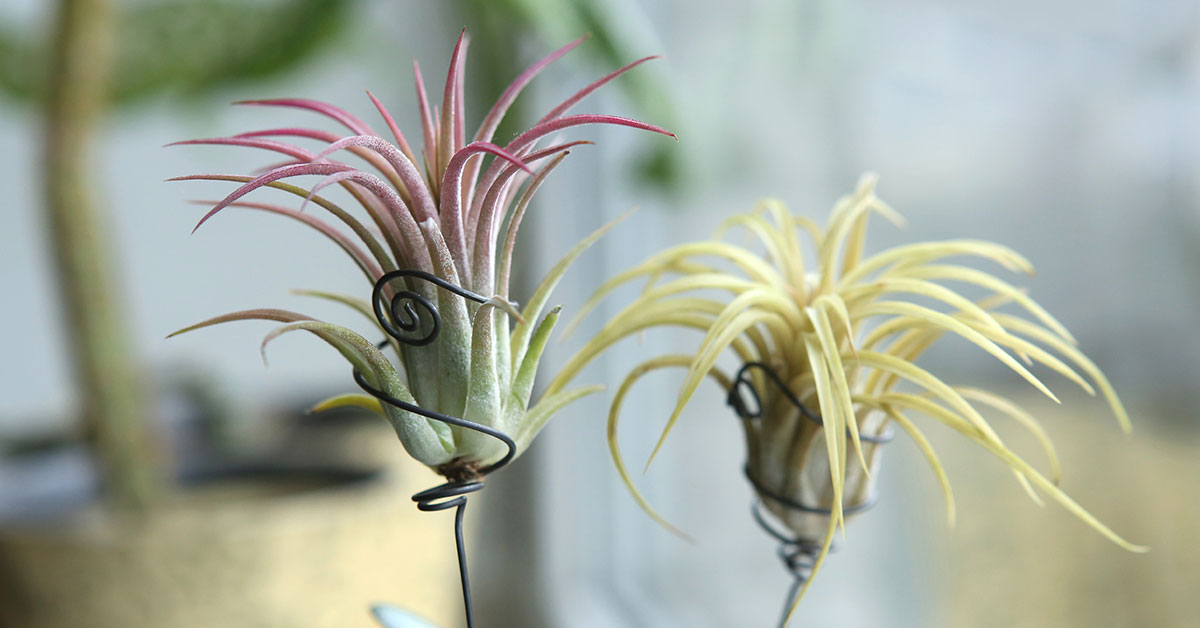Air plants, or Tillandsias, are amazing plants requiring minimal care and can thrive indoors and outdoors. However, if not cared for properly, air plants can die; identifying the signs of a dying air plant can help you to take the necessary steps to save it. Common signs of a dying air plant include brown, wilting leaves and a lack of blooms. If you notice these signs, it is important to adjust the amount of water and light the plant is getting; too much water can be just as detrimental as not enough. In this article, we’ll break down the steps to revive a dying air plant and what care needs to be provided afterward.
Signs your air plant is dying
Before you jump into action, it’s important to know for sure if your air plant is dying. These are the most common signs of a Tillandsia that is struggling to thrive:
- Brown or discolored leaves
- Soft or mushy leaves
- Dry and brittle leaves
- Yellowing of the leaves
- Wilting or shriveling of the leaves
How to revive a dying air plant
If your air plant is clearly dying, it’s important to act quickly if you want to revive your air plant. Follow these steps to help your Tillandsia recover:
Remove diseased leaves
Removing diseased leaves from an air plant is an important part of keeping the plant healthy and thriving. Diseased leaves may have discoloration, browning, or spots that indicate an infection. In order to prevent further spread of the disease, it is important to carefully remove any diseased leaves as soon as possible. It is important to use sterilized scissors or snips to avoid transferring any bacteria or fungi. After the diseased leaves have been removed, it is important to dispose of them properly to prevent further spread of the disease. Discard them in the trash, and avoid adding them to a compost heap.
Provide proper lighting
Proper lighting for air plants is essential to their health and growth. Air plants need bright, indirect light, such as that from a south-facing window or fluorescent lighting. If possible, place your air plants in an area with natural light for at least 6 hours per day. It is important to avoid direct sunlight as this can cause the leaves to bleach and turn brown. If you are using artificial lighting, make sure to keep the plants at least 12 inches away from the bulb to avoid burning the leaves. For best results, rotate the air plants periodically to ensure that all sides of the plant get even light exposure.
Water regularly
Air plants, also known as Tillandsias, are some of the most unique and beautiful houseplants that you can grow. Proper watering is key to keeping them healthy and happy. Air plants should be soaked in water for 15 to 20 minutes every 2 weeks, or misted daily with a spray bottle. Make sure to avoid letting them sit in water as they may rot, and always dry them off completely after watering. They also benefit from a monthly bath in a weak fertilizer solution. Air plants prefer humid environments, so misting or setting them in a tray of wet pebbles can help to increase humidity. With proper watering, air plants can thrive, adding a touch of beauty to your home for many years.
Watch for continued signs of distress
It is important to watch for signs of distress in an air plant. Signs of distress can include wilting, discoloration, browning of the tips of leaves, or a decrease in the plant’s vigor. If an air plant shows any of these signs, it should be moved to a more suitable environment. It is also important to ensure the air plant is receiving enough light and water, as these are essential to air plant health. If the air plant continues to show signs of distress, it is important to move it to a new location or provide additional care.
Continued air plant care
If your air plant is on the road to recovery, congratulations! It’s not always easy to save a struggling plant. Continue to provide proper care to your air plant, including:
- Water: Air plants need to be watered 1-2 times a week, preferably in the morning. Fill a bowl with water and soak your plants for 10-20 minutes. Make sure to shake off the excess water after soaking and allow the plant to dry before putting it back in its spot.
- Light: Air plants need bright, indirect light. Place them near a window that gets ample sunlight, but make sure to protect them from direct sunlight during the hottest part of the day.
- Temperature: Air plants do best in temperatures between 60-80 degrees Fahrenheit.
- Fertilization: Air plants benefit from occasional fertilization. Use a diluted cactus fertilizer solution and fertilize your plants every two weeks.
- Pruning: If your air plants have dead or dying foliage, remove them by pruning.













